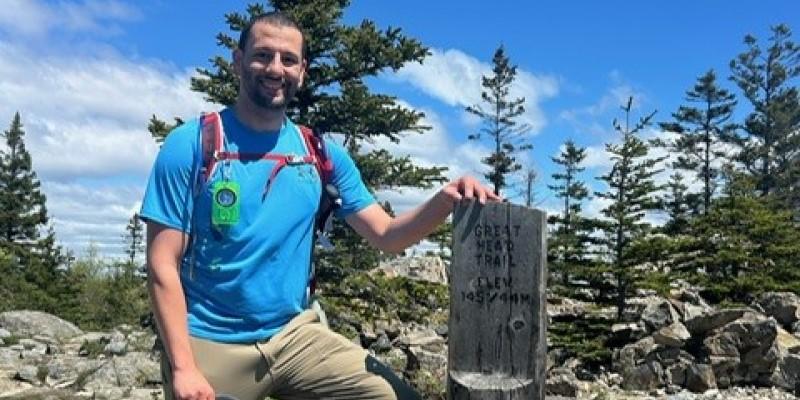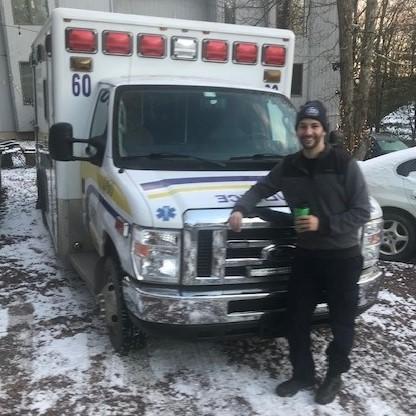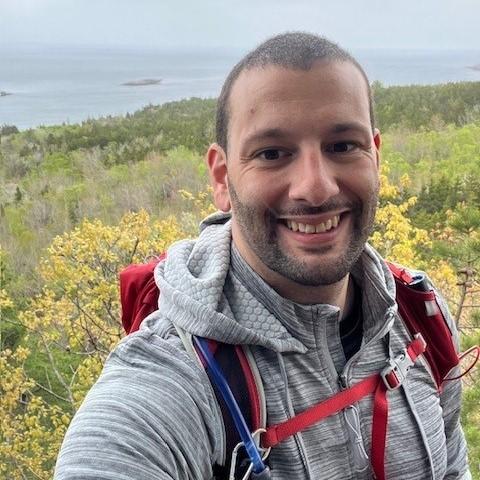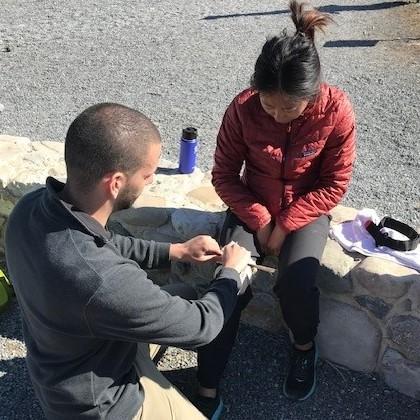How Daniel Plavin, MD ’18, combines his love of being outdoors with his love of medicine. He also shares tips for others interested in doing the same.
Attacked by a rabid bear. Impaled by a hunter’s arrow. Lost in the woods, disoriented and dehydrated.
Practicing wilderness medicine in Eastern Pennsylvania, Daniel Plavin, MD ’18, has seen a little bit of everything. His journey has taken him from high school search-and-rescue volunteer to completing a fellowship in wilderness medicine and starting a program for other doctors to follow in his footsteps.
What Is Wilderness Medicine?
Modern wilderness medicine has its roots in 1970s mountain climbing. That led to the first textbook on the topic in 1983, the year before the Wilderness Medical Society (WMS) was formed in 1982. The first fellowship in wilderness medicine was created in 2003, and now there are more than 20.
From Rural Pennsylvania to a Path Practicing Wilderness Medicine
Dr. Plavin’s path to wilderness medicine is as winding as the roads around his hometown of Jim Thorpe, PA, where he grew up one of five children raised by a police officer and hairdresser. The Poconos Mountains town, named for a Native American gold medalist, has a population of just 4,507.
In high school, he volunteered with the fire department and ambulance service. He loved being outdoors, and those roles took him on search-and-rescue missions looking for lost hunters and even a downed aircraft in the state park.
He felt drawn to medicine, and one of the two doctors in town helped guide him. He headed to New York to study chemistry at Binghamton University. After graduating, he applied to medical schools in the U.S. and abroad. Adtalem Global Education’s American University of the Caribbean School of Medicine offered him financial support, and he moved to St. Maarten, even farther from home.
He did clinical rotations in New York City—Queens, Manhattan and the Bronx. “I quickly realized the city life was not for me,” he says. “It reinforced for me that I’m a small-town boy.”
He was relieved to match near his hometown, at St. Luke’s University Health Network for a residency in rural family medicine. “The goal of the program was not only to train residents on how to work with the local population, but also to get them to stay and practice in a rural area.”
Dr. Plavin returned home and stayed. He even goes down the block back to his former high school to talk about careers in healthcare.
His connection to emergency medical services as a rural medicine resident led him to a fellowship program in wilderness medicine. Now he’s bringing that experience back to his former residency program as a Wilderness Track.
Inside a Wilderness Medicine Emergency
Dr. Plavin says, adding that each is a little different depending on the situation.
Injuries range from ankles broken on slippery rocks at the local waterfall to concussions from kayaks overturned in swift, choppy water. Sometimes they are searching for someone who has wandered off the path, which might require dog teams or drones.
What doesn’t change is the need to tend to injuries with limited resources, provide psychological aid and find a way to get someone out of the woods and to a waiting ambulance, or in rare cases a helicopter.
Tips for Getting into Wilderness Medicine
For those interested in wilderness medicine, Dr. Plavin offers the following advice:
- Follow your passion: Wilderness medicine encompasses a variety of areas from dive medicine to high-altitude medicine, creating a range of opportunities.
- Make your own path: Wilderness medicine is all about improvising, including how you get to where you want to practice.
- Reach out to others: The Wilderness Medicine Society is a great place to find others who can offer guidance and opportunities.
For more information, email the Adtalem Global Communications Team: adtalemmedia@adtalem.com.






